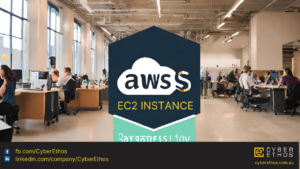
HOW DO YOU PROTECT AWS EC2 INSTANCES FROM SECURITY THREATS AND UNAUTHORISED ACCESS?
a. Patch Management: Apply security patches and upgrades to EC2 instances on a regular basis to reduce vulnerabilities and protect them from known security threats.

Ensuring the security of your cloud-based infrastructure and data is essential, as more organizations migrate their operations to the cloud. Here are key steps to help you secure your cloud environment:
Cloud Provider Selection:
Choose reputable and well-established cloud service providers with a strong track record of security and compliance. Consider your specific needs and compliance requirements when selecting a provider.
Shared Responsibility Model:
Understand the shared responsibility model provided by your cloud service provider. It outlines the division of security responsibilities between the provider and your organization.
Identity and Access Management (IAM):
Data Encryption:
Network Security:
Regular Patching and Updates:
Keep all cloud-based resources, including virtual machines and containers, up to date with security patches and updates.
Data Classification and Security Policies:
Logging and Monitoring:
Incident Response Plan:
Develop a comprehensive incident response plan specific to your cloud environment. Define roles and responsibilities for handling security incidents.
Backup and Disaster Recovery:
Regularly back up critical data and ensure that backups are stored in separate locations. Test data recovery processes to ensure they work effectively.
Vulnerability Management:
Conduct regular vulnerability assessments and penetration testing to identify and remediate weaknesses in your cloud environment.
Container Security:
If using containerization technologies like Docker and Kubernetes, implement security best practices for container image scanning, runtime protection, and orchestration security.
Serverless Security:
Apply security measures to serverless functions, including securing API Gateway and function invocation, and monitoring for malicious activity.
Compliance and Regulations:
Ensure compliance with industry-specific regulations and data protection laws, such as GDPR, HIPAA, and PCI DSS, by following cloud provider guidelines and best practices.
User Training and Awareness:
Continuously educate your team on cloud security best practices and the latest threats.
Third-Party Services and Marketplace Apps:
Be cautious when integrating third-party services and applications from marketplaces. Review their security and permissions carefully.
Cloud Security Posture Management (CSPM):
Consider using CSPM tools to continuously assess and maintain a secure cloud posture.
Secure DevOps:
Implement security in DevOps practices, including security reviews in the development and deployment pipeline.
Business Continuity and Disaster Recovery:
Plan for business continuity by establishing redundant cloud resources across different regions to ensure service availability in case of failures.
Regular Security Audits and Assessments:
Conduct periodic security audits and assessments to evaluate the effectiveness of your cloud security measures.
By implementing these measures, your organization can significantly enhance the security of its cloud-based infrastructure and data, helping to protect against cyber threats and data breaches.

a. Patch Management: Apply security patches and upgrades to EC2 instances on a regular basis to reduce vulnerabilities and protect them from known security threats.

Network forensic tools play a critical role in cybersecurity forensics because professionals use them to investigate and analyze network traffic, discover, prevent, and respond to
